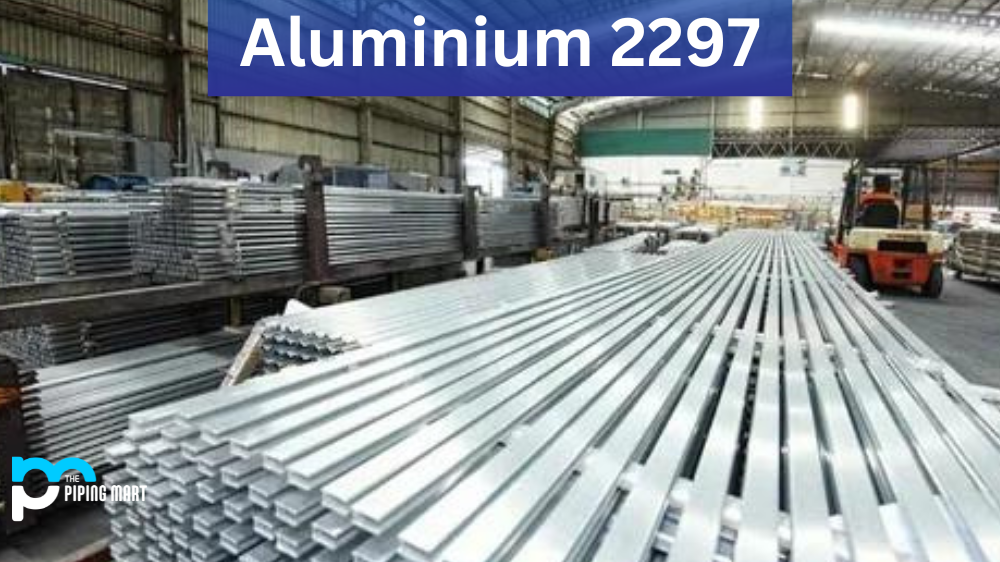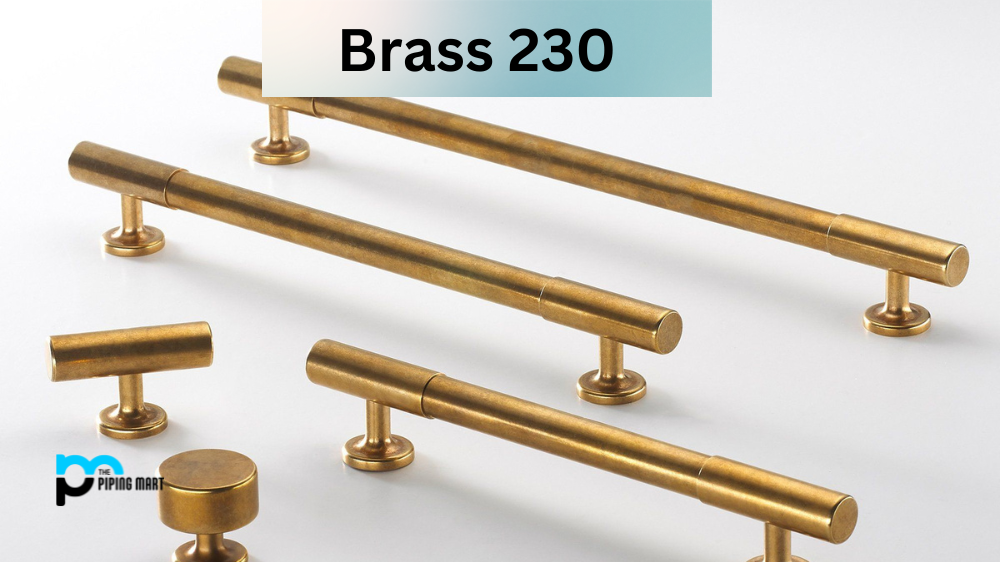Aluminium 2297 is one of the most widely used materials in engineering and manufacturing. With its impressive chemical, mechanical, and physical properties, it’s no wonder that aluminium 2297 is used in various applications across many industries. In this blog post, we’ll look at the composition, properties, uses and machining process of aluminium 2297.
Aluminium 2297 Composition
Aluminium 2297 contains copper (Cu) as its central alloying element. It also contains smaller amounts of manganese (Mn), iron (Fe), silicon (Si), zinc (Zn), magnesium (Mg) and titanium (Ti). Combining these elements produces a corrosion-resistant alloy with good mechanical strength and excellent electrical conductivity.
| Element | Amount |
|---|---|
| Zinc (Zn) | 0.05% |
| Copper (Cu) | 2.50-3.10% |
| Silicon (Si) | 0.1% |
| Chromium (Cr) | 0.05% |
| Manganese (Mn) | 0.10-0.50% |
| Aluminum (Al) | rem% |
| Lithium (Li) | 1.10-1.70% |
| Magnesium (Mg) | 0.25% |
| Titanium (Ti) | 0.12% |
Aluminium 2297 Chemical Properties
Aluminium 2297 is known for its outstanding corrosion resistance. It also has good thermal stability, making it suitable for high-temperature applications. Additionally, it has excellent electrical conductivity, making it suitable for use in electronic components like circuit boards. Its high strength-to-weight ratio makes it ideal for structural components such as aircraft frames or automotive parts.
Aluminium 2297 Mechanical Properties
| Thickness mm (in) | DIR | 38.1 ≤ th ≤ 50.8 (1.5 ≤ th ≤ 2) | 50.9 ≤ th ≤ 63.4 (2.001 ≤ th ≤ 2.5) | 63.5 ≤ th ≤ 76.2 (2.501 ≤ th ≤ 3) | 76.2 ≤ th ≤ 101.6 (3.001 ≤ th ≤ 4) | 101.6 ≤ th ≤ 127 (4.001 ≤ th ≤ 5) | 127 ≤ th ≤ 152 (5.001 ≤ th ≤ 6) | |
|---|---|---|---|---|---|---|---|---|
| Tensile strength MPa (ksi) | L | min | 441 (64) | 434 (63) | 427 (62) | 427 (62) | 421 (61) | 414 (60) |
| Yield strength MPa (ksi) | L | min | 400 (58) | 393 (57) | 393 (57) | 393 (57) | 386 (56) | 379 (55) |
| Elongation % | L | min | 10 | 9 | 9 | 5 | 5 | 5 |
| Toughness K1c MPa√m (ksi√in) | L-T | Typ. | 35.2 (32) | 35.2 (32) | 35.2 (32) | 34.1 (31) | 33 (30) | 31.9 (29) |
| E (tension) Gpa (Msi) | L | Typ. | 75.2 (10.9) | |||||
| Stress Corrosion Cracking MPa (ksi) aSTM G47 | ST | max | 207 (30) | |||||
| Density g/cm³ (lb/in³) | Typ. | |||||||
Aluminium 2297 Physical Properties
Aluminium 2297 has a low density compared to other metals, such as steel or brass, making it lighter than those materials while still providing strength and durability. It also has good formability due to its relatively low melting point, so it can easily be formed into shapes without significant work hardening or stress relaxation. Additionally, its low coefficient of friction means that parts made from aluminium don’t require lubrication during operation.
Aluminium 2297 Uses
Due to its strength and lightness, aluminium 2297 is often used in aerospace applications where weight savings are essential, but strength is still needed for safety reasons. This material is also commonly used in automotive bodies and parts because it can be easily formed into complex shapes while retaining good strength characteristics. Additionally, aluminium alloys are often used in power transmission lines due to their high electrical conductivity and resistance to corrosion from weathering elements like rain or snow. Finally, this material is frequently used in consumer electronics because it provides good heat dissipation while being cost-effective compared to other metals like copper or brass.
Corrosion Resistance
Aluminium 2297 is an aluminium alloy with a strong combination of chromium, molybdenum, and manganese, giving it superior corrosion resistance. It offers excellent protection from harsh environmental conditions such as humidity and saltwater; this makes it the perfect choice for any application that requires long-term use in these areas. Aluminium 2297 is also one of the few alloys able to survive extreme temperatures and caustic chemicals while maintaining its structural integrity. Its exceptional durability makes it a popular choice for many industries where quality matters more than cost.
Heat Resistance
Aluminium 2297 offers superior heat resistance, making it an ideal metal for several different applications. Thanks to its heat-resistance properties, this type of aluminium are commonly used in the automotive and aerospace industries and consumer product production. It is also highly corrosion-resistant, making it an increasingly popular option among manufacturers looking for a reliable material that can withstand extreme temperatures. Aluminium 2297 truly has the power to revolutionize how many products are created and used – bringing incredible levels of durability and strength that other metals simply can’t match.
Heat Treatment
Adopting the 2297 aluminium heat treatment is an effective and simple way to achieve desired metallurgical and mechanical properties. This alloy responds well to heat treatment, allowing users to optimize their production processes while maximizing the material’s tensile strength, plasticity, ductility, impact toughness, corrosion resistance, and fatigue strength. This method can effectively reduce the time, effort, and costs associated with producing desirable end products by carefully controlling the timing of heating and cooling stages according to user requirements.
Machining
Aluminium 2297 machining is a complex process that involves obtaining the best results with impressive precision. This process typically starts with the aluminium being cut and shaped into the desired form before being subjected to grinding and drilling operations for further refinement. Aluminium 2297 machining can produce incredibly durable and accurate parts even on large production runs with high-speed machinery, cutting tools, abrasive machines, and other instruments. This type of machining takes an experienced team of professionals who understand the intricate details of creating parts that meet specific design requirements. When done correctly, aluminium 2297 machining will yield exceptional results while being cost-effective at the same time.
Welding
Aluminium 2297 welding is a specialized process that requires knowledge and skill to properly weld this unique alloy. The aluminium-silicon alloy has a high hardness, often requiring operators to use an inert gas like Argon to shield the flame. Moreover, special cleaners and etchants must prepare the metal for soldering. Preheating with oxygen and Acetylene may be necessary to ensure a strong bond between components and prevent cracking. This welding technique is essential when fabricating components where strength and resistance to abrasion or corrosion are requirements, such as automobile or aircraft parts.
Conclusion
As you can see from this comprehensive guide to aluminium 2297, this material offers many advantages over traditional metals like steel or brass for certain applications due to its unique combination of chemical, physical and mechanical properties. Aluminium alloys are becoming increasingly popular for use in aerospace applications because they provide the necessary strength while still being lightweight enough not to cause excessive drag during flight; they’re also popular for consumer electronics because they provide excellent heat dissipation capabilities without having to resort to expensive materials like copper or brass; finally; they’re becoming increasingly common for automotive components due to their ability to be formed into complex shapes with minimal work hardening or stress relaxation occurring during the forming process. Whether you need a strong yet lightweight material for your next project or just want something reliable that won’t break the bank – Aluminium 2297 is worth considering!

Abhishek is a seasoned blogger and industry expert, sharing his insights and knowledge on various topics. With his research, Abhishek offers valuable insights and tips for professionals and enthusiasts. Follow him for expert advice on the latest trends and developments in the metal industry.




